MercoPress. South Atlantic News Agency
Tag: R/V Falkor
-
Wednesday, December 10th 2025 - 19:28 UTC
Scientists to research life in extreme cold seeps of the Argentine coast with MV Falkor

A team from the US based Schmidt Ocean Institute and its research vessel MV Falkor together with scientists from Argentina will undertake the first and most comprehensive visually guided study of Argentina’s cold seeps, beginning 14th December until 10 January 2026.
-
Tuesday, December 9th 2025 - 22:25 UTC
Killer sea sponge in deep Antarctic waters traps and devours live species
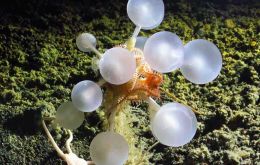
A team from The Nippon Foundation’s Nekton Ocean Census worked with Schmidt Ocean Institute’s ship Falkor to reach far beneath Antarctic waters, where they found/discovered and recovered, with the help of a robot submarine, a raft of sea bed species
-
Friday, October 3rd 2025 - 09:52 UTC
Scientific vessel stranded in Buenos Aires
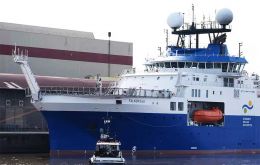
The Falkor (Too), a highly-publicized scientific vessel, which carried out missions for Uruguayan and Argentine researchers recently, is being delayed at the Port of Buenos Aires because of a missing signature.
-
Saturday, September 20th 2025 - 08:32 UTC
Pilots recount deep-sea mission off Uruguay with Schmidt Ocean Institute’s ROV SuBastian
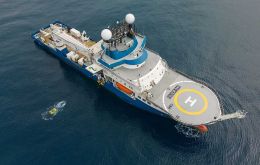
After nearly a month at sea, the research vessel Falkor (too) returned to Montevideo, closing the Uruguay SUB200 expedition with unprecedented footage and discoveries from the country’s deep ocean. Central to the mission was SuBastian, the remotely operated vehicle (ROV) piloted in 12-hour shifts by a small team of specialists.
-
Monday, September 1st 2025 - 09:51 UTC
Researchers find wreck of former Uruguayan Navy's ROU 01

The “Uruguay Sub200” scientific expedition, aboard the research vessel Falkor, has discovered the shipwreck of the destroyer ROU-01 Uruguay - formerly the USS Baron - at a depth of 1,160 meters off the coast.
-
Wednesday, August 27th 2025 - 10:27 UTC
Uruguay: Falkor resumes mission after repairs
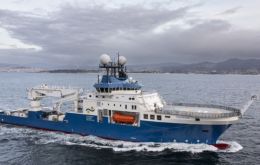
The Uruguay Sub200 expedition has resumed its study of the Uruguayan continental seabed after a technical fault forced its research vessel, the Falkor, to return to the port of Montevideo. By late Tuesday, the Falkor was due in Punta del Este.
-
Tuesday, August 26th 2025 - 09:21 UTC
Research vessel Falkor (too) halts Uruguay expedition after technical failure
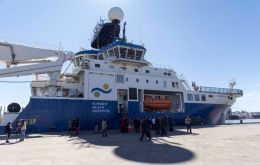
The Falkor (too), research vessel of the Schmidt Ocean Institute (SOI), returned to Montevideo on Monday after suffering a malfunction in the early days of its “Visualizing the Deep off Uruguay” (Uruguay SUB200) expedition.
-
Thursday, August 21st 2025 - 10:25 UTC
Scientists on a joint expedition to “visualize the deep off the Uruguayan coast”

This Next Friday August 22nd, R/V Falkor (too) from the California based Schmidt Ocean Institute, departs with a team of scientists from Uruguay’s main University for a month long expedition to “visualize the deep off the Uruguayan coast”.
-
Monday, March 24th 2025 - 08:53 UTC
Unexpected forms of life found under loose Antarctica iceberg

Researchers found unimagined forms of life under the A-84 iceberg nearly 30 kilometers long and 510 square kilometers in area, which broke off from the George VI Ice Shelf in Antarctica earlier this year, exposing a previously hidden stretch of ocean unseen for decades, it was announced last week.
-
Thursday, August 16th 2012 - 19:37 UTC
Ship linked to Captain Scott’s failed South Pole expedition found off Greenland
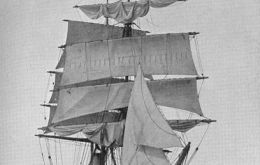
The wreck of the ship that carried Captain Robert Scott on his doomed expedition to the Antarctic a century ago has been discovered off Greenland. The SS Terra Nova was found by a team from a US research company.
